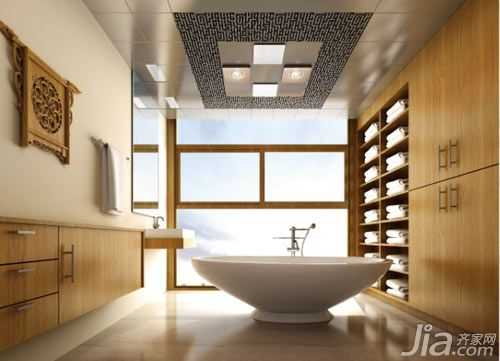
One of the main benefits of integrated ceilings is their ease of cleaning, which has led to the development of many anti-oil and self-cleaning options on the market. However, despite these innovations, the integrated ceiling industry often overlooks the importance of regular cleaning and maintenance. Kitchens, in particular, can accumulate grease over time, even with ceilings boasting advanced self-cleaning properties. If left unattended for too long, this can dull the shine and impact the overall appearance of the ceiling.
Maintenance Tips:
To keep your integrated ceiling looking its best, simply apply a small amount of a specialized desiccant designed specifically for ceilings using a soft, absorbent cloth. After wiping down the surface, you’ll find that no water residue remains, leaving the ceiling shining like new. A warm reminder: when cleaning the center panels, you can apply slightly more pressure, but when working around the edges, be gentle to avoid compromising the ceiling's flatness. Avoid using hard objects or abrasive sponges, as they can create unsightly scratches on the glossy surface.
Surface Technology of Integrated Ceilings:
1. Lamination Process: A PVC film ranging from 18 to 25 microns thick is directly molded onto an aluminum substrate under high temperatures. While this method is cost-effective, it has the downside of fading over time.
2. Roller Coating Process: A polymer coating is applied to the surface, offering durability and resistance to discoloration.
Roller Coating with Screen Printing: This involves applying screen printing on top of the roller-coated board, resulting in a more colorful finish.
Roller Coating with Thermal Transfer Printing (or Hot Seal Printing): Similar to screen printing, this technique adds designs to the roller-coated base, but instead of traditional ink, it uses a high-temperature sublimation process to infuse the design into the coating. This gives the surface a smooth texture without any uneven feel, unlike screen printing. Moreover, thermal transfer printing allows for a virtually unlimited combination of colors, making it a more flexible and modern approach compared to traditional screen printing, which is limited to one or multiple colors.
3. Brushing Process: This involves applying a layer of varnish onto an aluminum substrate, which is the most common type of panel available today.
Ceiling, Integrated Ceiling, Kitchen Ceiling, Painted Ceiling
Total Station,Total Station Surveying Dadi Series,Window Double Axis Total Station,High Precision Total Station
Changzhou Precision Surveying & Mapping Instrument Co.,Ltd , https://www.surveyingfactory.com